Number of Water Points in Beef Cattle Barns Uk
Raising beef cattle is a complex procedure that requires a lot of hard work, commitment, and dedication to produce a superior quality of beef. There are many advantages of raising beef cattle for profit. Raising beef cattle for profit on a small farm is possible too, just like raising beef cattle on a large farm. Whether small scale or large scale, the beef produced should be of superior quality, free from any pathogens or diseases, and fit for human consumption. Thus, a team of dedicated beef farmers and ranchers is required to keep a vigilant check on every step associated with beef production. This helps in ensuring that the beef produced is safe from the pasture to the plate.
RAISING CATTLE FOR BEEF
Bringing the healthiest beef from the pasture to the plate is the dream of every beef farmer and rancher. For this dream to become a reality, ranchers are always trying different techniques and follow different regulations guide for raising beef cattle for money. One such program which trains farmers and ranchers on the best beef cattle management techniques is the Beef Quality Assurance (BQA) program. The BQA helps in teaching all the modern techniques and methods to the farmers and ranchers for raising beef cattle under the most optimal environment and economic conditions. As beef quality assurnace certification is earned and not bought, farmers and ranchers are always on their toes for producing the most premium quality beef. Apart from the BQA, Storey's guide to raising beef cattle is also considered very helpful by many ranchers. Whether you are a new or experienced rancher, this is considered as a reliable reference for the success of your cattle operation. This book encompasses everything you need to know about your cattle, from their health, handling, and breeding. The author of this book, Heather Smith Thomas, himself, has been a long-time rancher.
Staring off with raising cattle for beef requires proper research. The investment that would have to be made depends on the type of beef cattle and the size of the herd you want to keep. Generally, medium-sized cattle are preferred. Raising cattle for beef requires proper management. Before starting with your herd, it is always a good idea to talk to other successful beef producers in your area to get a general idea of what to expect from this new venture. Furthermore, it is very important to maintain records of your cattle, just like you would do in any other business.
There are various options for choosing your beef cattle. These options include the Black Angus, Red Angus, Wagyu, Charolais, Simmental, Hereford, and miniature cattle for beef.
1. Raising Black Angus Beef Cattle
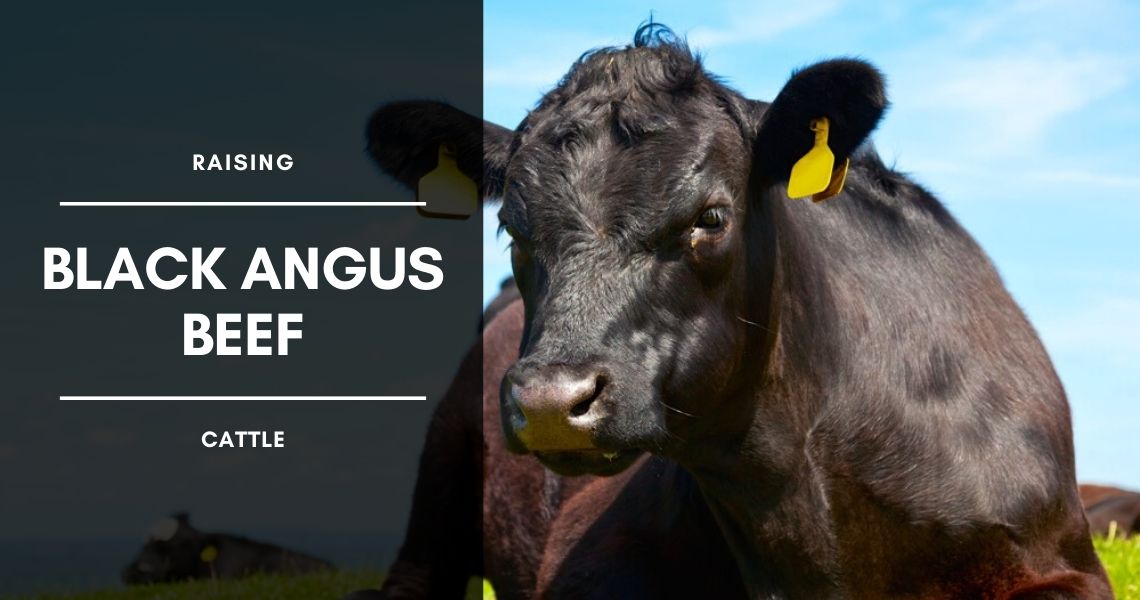
This Scottish breed of small beef cattle is the most popular breed with the ranchers. Raising Black Angus beef cattle is considered to be the safest choice as these cattle at good at converting their feed into high-quality beef. They mostly require low maintenance than other cattle breeds.
2. Raising Red Angus Beef Cattle
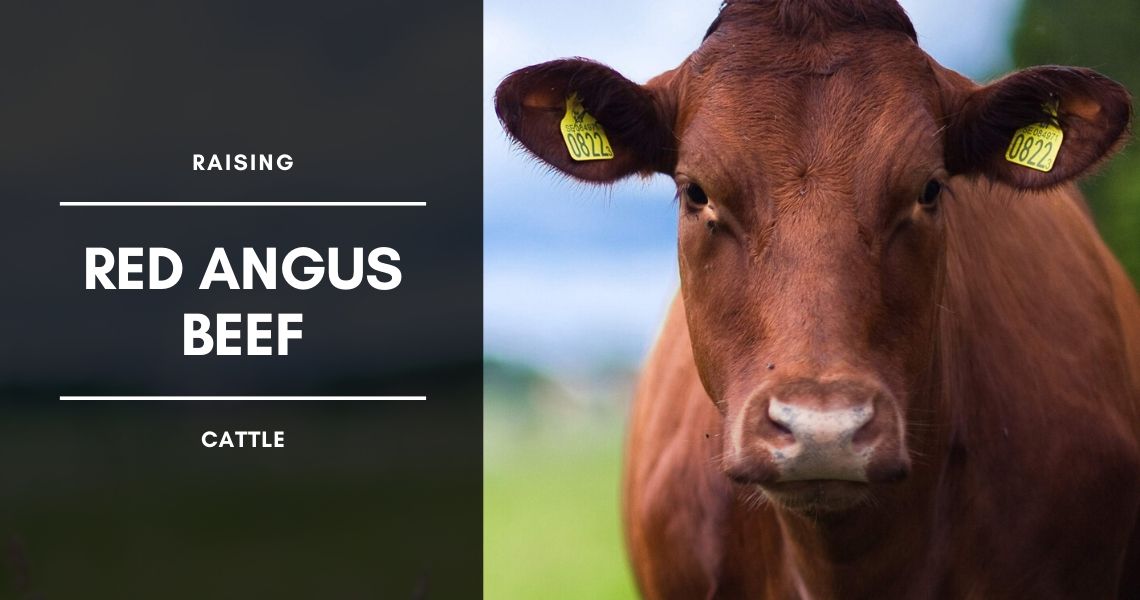
As the name suggests, these cattle are red in color. They belong to the Angus family of cattle but are not as widely raised as the Black Angus. They provide a similar texture and flavor of the beef to the Black Angus, and they happen to be more heat tolerant than them. Thus, they are a good choice of beef cattle in warmer countries. The Angus cattle are considered to be the top of the line cattle.
3. Raising Wagyu Beef Cattle
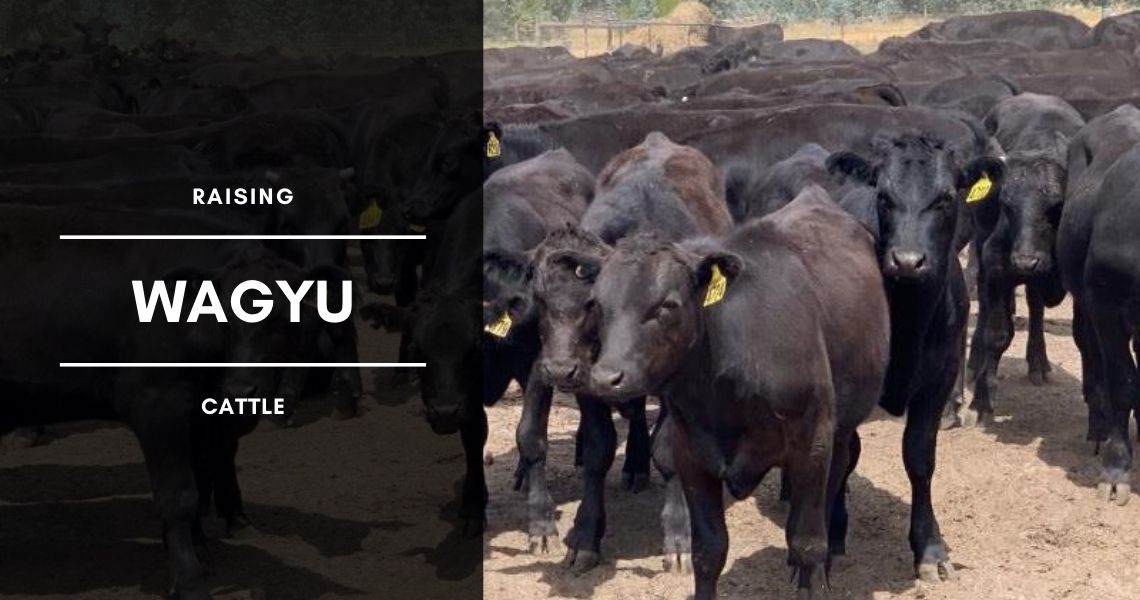
Wagyu are referred to as Asian cattle. They can store large amounts of fats within their muscle tissue. This layer of intramuscular fat is called marbling; the greater the marbling, the more tender and juicer the beef. These cattle have to be literally 'spoiled' for them to put on more marbling. It is generally observed that the happier Wagyu cattle tend to put on more marbling. It is safe to say that raising the Wagyu beef cattle requires a lot of extra efforts than the other cattle breeds.
4. Raising Charolais Beef Cattle
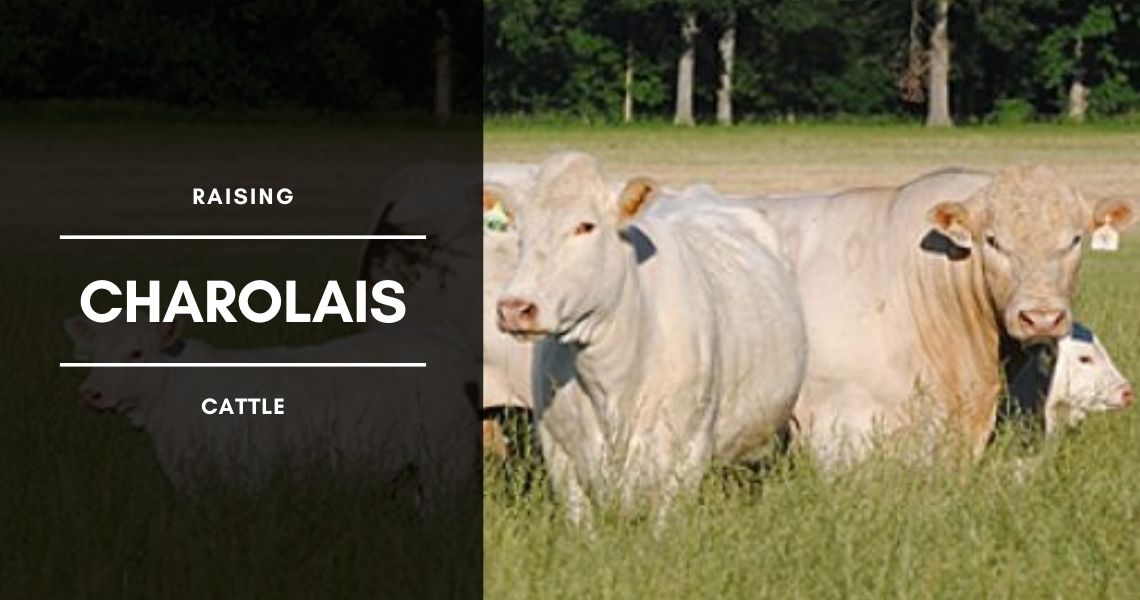
The Chaolais cattle is a French breed, mostly seen as a white or creamy white colored cattle. They can endure cold temperatures relatively well, and they happen to be more heat tolerant than a lot of other dark hided breeds. They are naturally horned and are known for their bad temperament. Thus, it would be a good idea to dehorn them if they are in close proximity to each other. They are famous for their high yield and good quality meat. Also, they are known as fast weight gainers.
5. Raising Simmental Beef Cattle
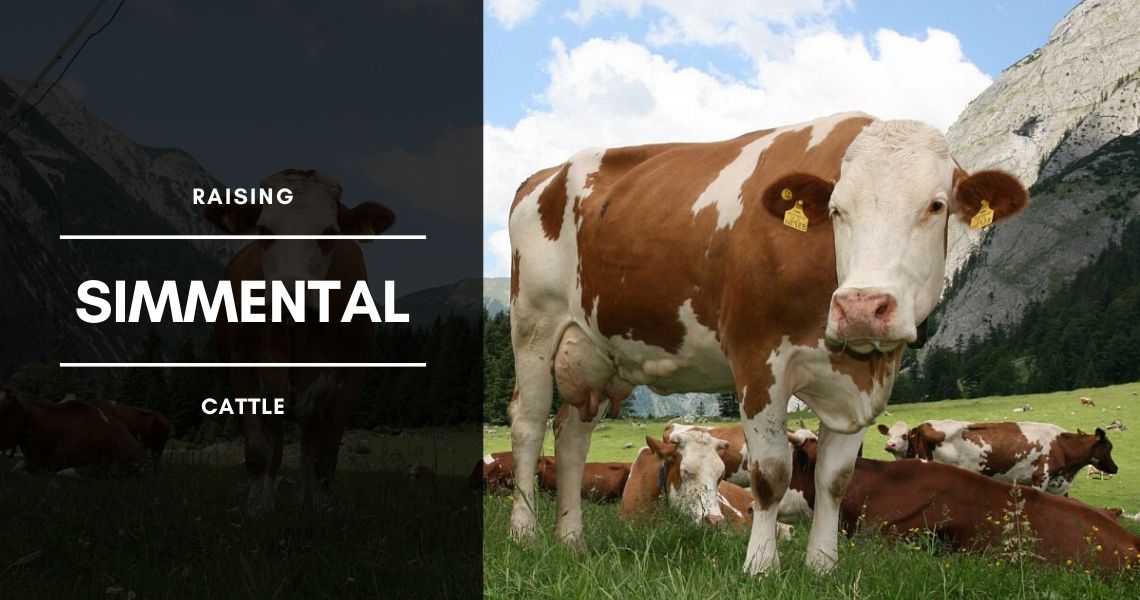
The Simmental cattle is a Swiss breed with a large frame. They have a longer lifespan as compared to other cattle breeds. They mature early and are good at converting their feed to weight efficiently. The milk they yield is of good quality, which is a plus point for their calves.
6. Raising Hereford Beef Cattle
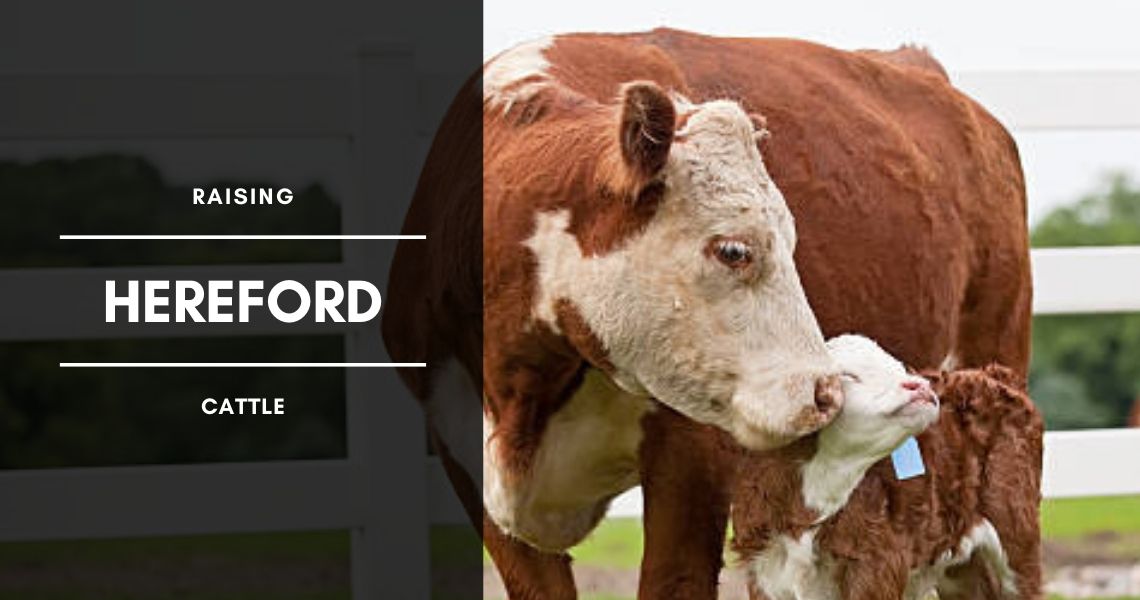
The Hereford is a British breed of cattle. They have a red-brown color with white markings, especially on their faces. These cattle are deemed suitable for raising on a small farm. They are well-known to survive in rough ranching conditions, without compromising the beef quality produced.
7. Raising Miniature Cattle for Beef
Raising miniature cattle is a good option for small scale farms. You do not need to have a lot of cattle on your farm. They are a product of several cross-breeding programs, and they are considered as an excellent choice for your personal use, rather than producing commercial beef. These cattle are much easier to handle.
RAISING ORGANIC BEEF CATTLE
Recently, there has been an increase in the demand for organic food. With people becoming more aware of the disadvantages and health hazards associated with chemicals, people want to have beef, which is fed on organic feed and is free from hormones and other harmful medications. The first and foremost step for raising organic beef cattle is to search for an organic meat producer in your locality, from where you can purchase organic cow calves. Moreover, you also need to contact your local authorities for the organic certificate of your beef. Once all the essential paperwork is done, you are ready to start with your organic beef cattle!
Raising Grass-Fed Beef Cattle
Raising grass-fed beef cattle is a bit challenging due to the fact that there is a limited supply of organic grass throughout the year, and you cannot rely on any artificial means of cattle feed. Hence, there is an additional cost of purchasing organic hay and grains to feed your cattle. Furthermore, your beef cattle cannot graze on any pasture they find, due to the use of insecticides/pesticides and fertilizers. For this reason, an organic grazing area has to be established, as the beef cattle have to be fed organic feed only. Cattle fed only on grass tend to be thinner than the cattle fed on grains. To know the difference between grassfed and grainfed beef, check out this blog.
Raising Grassfed Beef Cattle on a Small Farm
Raising Beef Cattle on Pasture
Once you have found the right size of pasture for your cattle, you are ready to start with your beef cattle farm. Generally, it is a good idea to start with your cattle farm during the summer months, as there is ample pasture for your cattle to graze on. Once the cattle have fed on the pasture, and have gained enough weight in the summer months, they would be ready for slaughter during the winter months.
RAISING BEEF CATTLE FOR PROFIT ON A SMALL FARM
Raising beef cattle on a small scale on a few acres is possible. You do not need a lot of acres to raise your cattle for beef. However, due to a limited supply of land, you cannot keep a large herd of beef cattle. This is because of the main reason for a limited pasture supply. The grass is not available throughout the year. In winters, the pasture is scarce, and cattle have to be fed hay. This hay has to be stored in a clean, cool, and dry place, to protect it from the mold. Raising beef cattle on a small farm is definitely possible, but the profit would be much less than the profit made on a large farm.
Cost of Raising Beef Cattle
As discussed earlier, raising cattle for beef requires a lot of dedication and hard work. Apart from this, it also requires money. A small portion of the profit made from selling beef is reinvested into the cattle. This may include managing their feed and pasture, their health (vaccines, medicines, vets, etc.) and breeding. In winter months, grass may not be abundant to feed the beef cattle, so to fulfill the cattle's dietary needs, additional feed is required, such as hay, vitamins, and minerals.
The basic requirements for raising beef cattle are land, clean water, and fencing. As soon as you choose the pasture land, it is important to place a fence on the periphery of the land, to help confide the beef cattle in one place. You can choose from fence posts, barbwires, electric, or wooden fencing. Moreover, the land (pasture) also has to be taken care of. The grass has to be mowed frequently, and there has to be a constant water supply. This water supply may be from a natural source nearby, such as a pond or creek, or any other artificial source, such as a water trough.
The flavor of the beef comes from the feed given to cows and also from the handling of the meat during and after butchering. Generally, beef cattle are butchered in fall, after when they have gained enough weight in summer. Once the cattle have been slaughtered, it should be aged for about 14 days. This helps in providing flavor to the meat.
FREQUENTLY ASKED QUESTIONS:
WHAT IS BEEF CATTLE RAISING?
Beef cattle raising is a simple on-going process, which requires a lot of commitment and dedication by the ranchers. You can start with your own beef cattle raising process, with a small cattle herd, and look after them by using various strategic plans and operations. To put it in simple words, it specifically means raising cattle in safe, specialized farms for the main purpose of the production of beef.
HOW DO I START RAISING BEEF CATTLE?
Raising beef cattle begins with the selection of available pasture for your cattle. The herd of cows is maintained by ranchers. These cows give birth to calves at least once a year, which typically weigh about 60 to 100 pounds. Then, these calves are weaned from 6 to 10 months of age, and then they continue to feed on grass pastures. In addition to this, these calves also receive a small quantity of supplemental plant-based fee for some extra energy to grow. Once the weaning period is over, these cattle graze on grass pastures independently, and they are also provided with supplemental feed, such as vitamins and minerals, to help meet all their nutritional requirements. During this time, cattle may be sold to local breeders or at various livestock auction markets. There is a lot of variation in raising beef cattle. It all depends on the type and size of cattle herd you choose to breed. Some of the most popular breeds of cattle are Angus, Red Angus, Charolais, Hereford, and Simmental. It takes a committed team to produce good, nutritious, high-quality beef from pasture to plate.
HOW MANY ACRES DO I NEED TO MAKE A LIVING RAISING BEEF CATTLE?
The acreage required by your beef cattle depends on the type of breed, size, and weight of your cattle. Once you have selected an area, it is mandatory to put a fence around it. As a general rule of thumb, 1.5 to 2 acres of land area are required to feed a cow-calf pair for about 12 months. This means you can have 10 to 13 cows for 1.5 to 2 acres of land. Furthermore, acreage also depends on the geographical location and the quality/type of pasture available for the cattle to graze on. While choosing the acreage, it is extremely important for ranchers to keep into consideration the environment and also their fellow ranchers. The Beef Quality Assurance (BQA) program looks after this issue. It is a program that helps to ensure that the animal, environment, the beef community, and the consumers are all taken care of, within the guidelines and regulations set by this program.
HOW DOES RAISING BEEF CATTLE IMPACT PEOPLE'S LIVES?
Raising beef cattle in a safe, environmentally friendly, and sustainable way by using the latest technology and resources is the most essential requirement in making the beef safe from pasture to plate. The Beef Quality Assurance (BQA) program is a program that is offered by various institutes, which provide agricultural, zootechnical, veterinary, and zoo veterinary degrees. This program helps in providing thorough training to the beef farmers and ranchers, for them to practice the set guidelines and regulations for cattle management vigilantly. If the farmers and ranchers do not follow these guidelines while raising the beef cattle, the beef produced would not be safe, healthy, or of required nutritional value. Hence, the meat produced would not be certified by the food regulating authorities, as it will not be deemed fit for human consumption. The beef produced will not be able to fulfill the approved daily intake of protein by different food regulatory authorities. The United States Department of Agriculture (USDA) is a regulatory body that is responsible for the implementation of safety and quality standards from the time the animals enter the plant, to the shipment of the final beef products to grocery stores and restaurants.
WHAT ARE THE PROS AND CONS OF RAISING WAYGU BEEF CATTLE?
Wagyu are Asian cattle that are descendants of draft animals (used to pull heavy loads). In Japan, there are four types of Wagyu cattle; the Japanese Black is the breed which is mostly shipped to the United States. It is not easy to breed Wagyu cattle without any progeny testing; only the genetically best Wagyu cattle are allowed to breed. This progeny testing helps in producing superior quality beef, but it adds an additional cost for the rancher. Furthermore, Wagyu cattle are raised differently than other cattle breeds. Wagyu beef calves spend twelve months with their mothers and then are fed out for another 400 days. This adds up to the cost of looking after the Wagyu cattle. This also means that the Wagyu cattle need more feed and pasture to graze on, which means it would add to the environmental hazards of grazing cattle. Unexperienced ranchers should not invest in Wagyu beef cattle because they are seen as high maintenance cattle in the beef community. Any mishandling of the cattle could cause the ranchers to incur a loss. However, Wagyu beef is considered to be the most superior quality of beef, due to its higher monounsaturated fat to saturated fat ratio, as compared to other types of beef available on the market. Hence, there is a high demand for Wagyu beef by up-scale restaurants and most health-conscious consumers. This high demand means that the ranchers can be sure of earning a lot of money if their beef is fit for human consumption.
hollandthaterminly97.blogspot.com
Source: https://animalcare.folio3.com/the-basics-of-raising-beef-cattle/
0 Response to "Number of Water Points in Beef Cattle Barns Uk"
Post a Comment